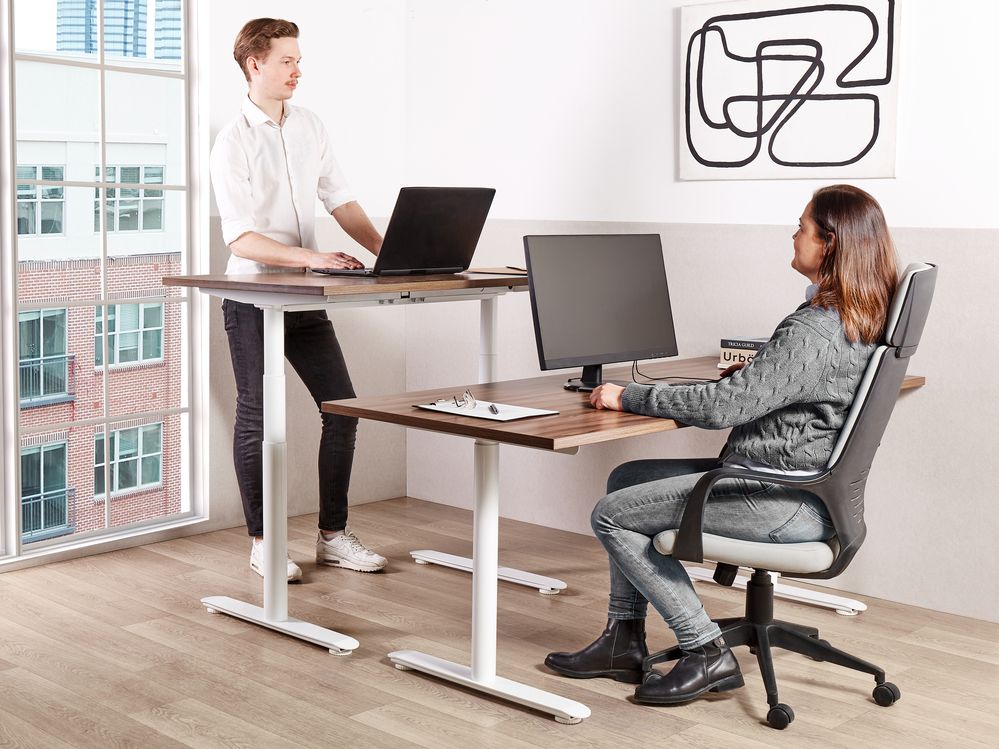There’s something quietly revolutionary about the rising popularity of height-adjustable workstations. Across offices and home studies, people are rediscovering how a small shift in daily habit, the simple act of changing posture can fuel transformation in both well-being and productivity. While the design seems straightforward, the ripple effects reach much further, touching everything from physical health to workplace culture.
Why Are Adjustable Desks Attracting So Much Attention?
It’s no secret that sitting for too long is linked to a range of health concerns. Reports from leading public health bodies highlight how sedentary office work can put people at risk for metabolic slowdown, difficulty managing blood sugar, cardiovascular problems, and even certain cancers. The NHS and World Health Organisation are now encouraging people to interrupt extended periods of sitting with regular movement—and workplace furniture is catching up with this advice.
Height-adjustable desks bridge the gap between health guidance and daily reality. These desks allow users to swap between sitting and standing with ease, supporting greater movement throughout the workday. That’s more than convenience; it’s a practical invitation to be kinder to your body and mind.
The Science Behind Movement at Work
Fresh research in the UK has made it clear that changing one’s working position has measurable advantages. A large controlled trial led by Dr Charlotte Edwardson at the University of Leicester stands out for its size and scope. Hundreds of British office workers embraced platforms that let them alternate between sitting and standing. The results spoke volumes:
- Those with adjustable desks, plus some structured guidance, sat much less than their peers.
- The reduction in sitting correlated with improvements in stress, discomfort, feelings of energy, and overall well-being.
- Educational materials were helpful, but the combination of information with the right desk equipment made a much bigger impact—tripling the effect on sitting reduction.
This shouldn’t be underestimated. The link between knowledge and access to practical tools shapes how effectively we change behaviour in a modern workplace.
Shaping Modern Workspaces
Adjustable desks aren’t restricted to glossy head offices or large budgets. The availability of portable and add-on converters means almost any environment can accommodate this new philosophy of movement. Whether you work in a co-working hub or a modest home office, it’s increasingly possible to choose how you spend your day—without major investment or disruption.
Flexible furniture also introduces a new sense of ownership into workflow. Users can start light, standing for only short intervals, before working up to more ambitious targets. There’s no pressure to stand all day; comfort and attentiveness to your own body’s cues remain the priority.
Real-world Impact: Productivity and Focus
While health is the most well-publicised driver of this movement, productivity is rarely far behind. Research from Professor Vincent Walsh at UCL uncovered a startling shift: participants using sit-stand converters were up to 45% more accurate at visual tasks after a single week. Office feedback echoes this improvement, with many users reporting sharper attention, better problem-solving, and fewer lapses into afternoon lethargy.
The psychological effects matter, too. People consistently note that being able to move, or simply change perspective, sparks fresh ideas and helps conversations flow. Meetings conducted on foot move faster, and the temptation to zone out or get lost in paperwork fades when posture supports alertness.
Creating a Culture of Movement
Beyond furniture, the growing trend is to rethink what ‘work’ looks like altogether. Dr Sarah Deedat from Bupa UK suggests interweaving periods of sitting, standing, and genuine movement. This can mean standing to take a phone call, taking short walks to speak with colleagues, or holding stand-up meetings. The message is clear: movement supports both mind and body, and it’s easier to achieve with the right tools.
Businesses quick to integrate these ideas have noticed measurable improvements not only in staff health metrics, but also in morale, attendance, and retention. Happy employees who feel in control of their work environment tend to perform better and stay longer.
Death by Sitting: Why We Need a Movement Revolution
 Walkolution founder and physician Dr. Soehngen reveals the dangers of a sedentary lifestyle. Discover why prolonged sitting disrupts our bodies and how incorporating movement into your daily routine can boost cognitive function and mental well-being. Dr. Soehngen’s powerful insights may inspire you to embrace a more active life and revolutionize how you work and live.
Walkolution founder and physician Dr. Soehngen reveals the dangers of a sedentary lifestyle. Discover why prolonged sitting disrupts our bodies and how incorporating movement into your daily routine can boost cognitive function and mental well-being. Dr. Soehngen’s powerful insights may inspire you to embrace a more active life and revolutionize how you work and live.
Innovations in Standing Desk Design
Interest in height-adjustable desks continues to grow, reflected in both online trends and direct feedback from users. The once rare “standing desk convert” is now a familiar sight across a range of industries and job functions. Popularity is being fuelled not only by new scientific evidence, but also by the diverse needs of hybrid and remote workers.
The embrace of this new way of working is quietly redrawing the boundaries of what is possible in corporate wellness, productivity, and daily satisfaction. While technology often dominates conversations about workplace progress, sometimes the most profound shifts begin with essentials as simple and human as the choice to stand.
By placing movement back at the heart of daily activity through adjustable desks, people are finding themselves healthier, sharper, and more engaged. The evidence is stacking up, as are the satisfied voices of thousands who now find their workdays genuinely transformed. As these desks become fixtures in professional and personal workspaces alike, the positive effects look set to continue multiplying.

